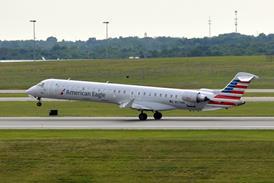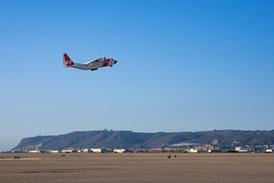Guy Norris/SEATTLE
Boeing is flight testing the prototype 737-900 to evaluate the aeroelasticity of the Next Generation 737 family's wing. The effort comes after flight tests of the winglet-equipped -800 suggest that benefits, in some conditions, will not be as great as expected.
The new appraisal was prompted when the results from flight testing of the 737-800 winglet test aircraft in California showed higher than expected fuel consumption at heavy gross weights. Although Boeing says the fuel burn of the winglet-equipped 737 is still substantially better than the baseline aircraft, the result was only discovered when ideal test conditions allowed fuel burn to be calculated at higher weights than normal.
Nautical air miles (NAMS) tests are to be performed by Boeing to see whether aeroelasticity (changes to the wing shape caused by aerodynamic loads) of the wing is itself responsible for the higher weight fuel consumption condition, or if the phenomenon is linked to increased wing route bending at higher weight induced by the winglets.
Initial testing appears to indicate that the basic production-standard wing does not exhibit aeroelastic tendencies, and that the phenomenon is likely to be seen on winglet-equipped aircraft only.
Although exact performance figures are yet to be determined, Boeing says the range predictions of the winglet-equipped 737-800, or the similarly fitted Boeing Business Jet (BBJ), will not be affected. It adds, however, that the results could explain why the overall range benefits of the winglets may not be as high as were first expected at high gross weights. The tests will be used to determine exact fuel burn guarantees, as well as provide a basis for potential winglet application on the -900.
Boeing also plans to conduct a short series of flutter tests to verify production standard changes to the 737-900 elevator tab. These have been developed to counter unexpected vibrations detected during initial flight tests. The vibrations were at a frequency of around 44Hz "so were fairly high," says chief project pilot Mike Carriker, who adds that the phenomenon is restricted to the larger -900 after flight tests of the -700 and -800 showed no signs of the problem. The fix involves adding a hinge point at the inboard end of the tab and beefing-up the composite structure of the tab with extra ply.
The vibration is the only unexpected issue to dog the -900's flight test programme. First deliveries to launch customer Alaska Airlines are on schedule for April.
Source: Flight International























